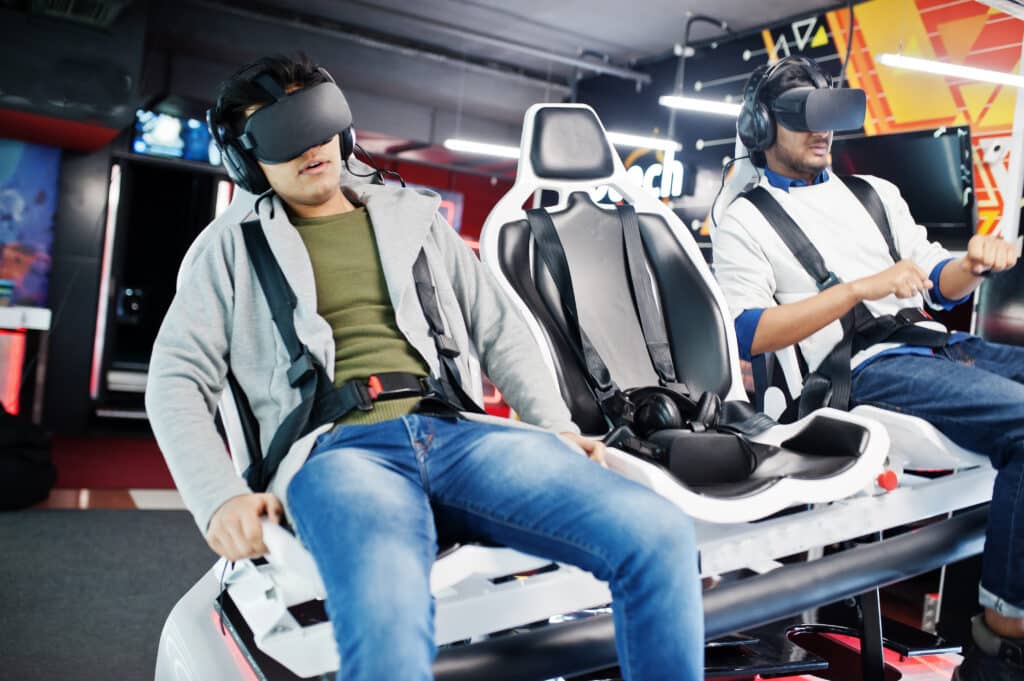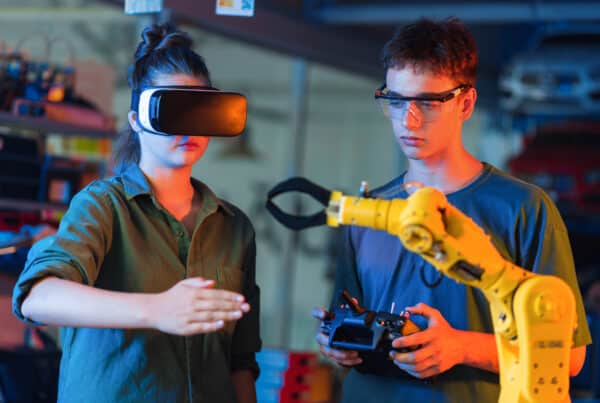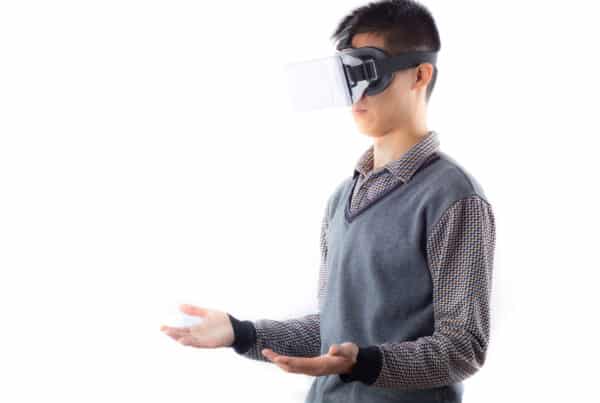
Introduction to Augmented Reality (AR) in Customer Engagement
Hey there! Let’s dive into the fascinating world of Augmented Reality (AR) and see how it’s revolutionizing customer engagement. AR is a technology that superimposes digital content onto the real world, creating immersive experiences that captivate and engage users. Over the past few years, AR has seen tremendous growth across various industries, particularly in retail, where it has become a game-changer in how businesses interact with their customers.
Customer engagement is crucial for building brand loyalty and driving sales. In today’s competitive market, capturing customer attention is more challenging than ever. This is where AR comes into play, offering unique and interactive experiences that not only attract customers but also foster long-term loyalty. By creating immersive environments, AR transforms the way customers perceive and interact with products, making shopping more enjoyable and memorable.
Benefits of Augmented Reality for Customer Engagement
AR offers a plethora of benefits that enhance customer engagement in innovative ways.
Enhanced Product Visualization
One of the standout features of AR is its ability to enhance product visualization. Imagine being able to see how a piece of furniture looks in your living room before making a purchase. AR allows customers to visualize products in their real environment, increasing purchase confidence and reducing the likelihood of returns. This immersive experience bridges the gap between online and in-store shopping, providing customers with a more informed decision-making process.
Gamified Interactions
AR also introduces gamified interactions that make shopping fun and engaging. By incorporating game-like elements into the shopping experience, businesses can capture customer attention and create memorable experiences. Imagine a scavenger hunt in a store where customers use their smartphones to find hidden treasures. These gamified experiences not only entertain but also encourage customers to spend more time interacting with the brand.
Interactive Storytelling
Brands are leveraging AR to tell compelling stories and build emotional connections with customers. Through interactive storytelling, businesses can convey their brand message in a way that resonates with customers on a personal level. For example, Nike’s interactive shoe displays and Sephora’s Virtual Artist app allow customers to personalize their experience, creating a deeper connection with the brand. These personalized experiences boost sales and foster brand loyalty.
Examples from Leading Brands
Leading brands are pioneering AR customer engagement strategies with remarkable success. Nike’s interactive shoe displays allow customers to customize their footwear, creating a unique and personalized shopping experience. Sephora’s Virtual Artist app enables customers to try on makeup virtually, enhancing their confidence in purchasing cosmetics. These examples demonstrate how AR can transform customer engagement and drive sales growth.
AR Applications Across Industries for Customer Engagement
AR is making waves across various industries, each finding unique ways to engage customers.
Retail
In retail, AR is used for virtual try-ons and interactive product displays. Customers can try on clothes or accessories virtually, reducing the need for physical fitting rooms and enhancing the shopping experience. Interactive displays provide detailed product information, helping customers make informed decisions.
Real Estate
In real estate, AR offers virtual property walkthroughs and staged environments. Potential buyers can explore properties remotely, visualizing how their furniture would fit in the space. This immersive experience streamlines the buying process and increases buyer confidence.
Automotive
The automotive industry uses AR for 3D model interactions and customizations. Customers can explore car features and customize their vehicles in real-time, enhancing the buying experience and reducing the time spent at dealerships.
Healthcare
In healthcare, AR provides patient engagement and education tools. Patients can visualize medical procedures or understand their treatment plans through interactive AR experiences, improving their understanding and compliance.
Examples
Notable brands like IKEA, Audi, and Mayo Clinic are pioneering AR customer engagement strategies. IKEA’s AR app allows customers to visualize furniture in their homes, Audi offers virtual test drives, and Mayo Clinic uses AR for patient education, demonstrating the versatility and impact of AR across industries.
Key Considerations for Implementing AR in Customer Engagement
Implementing AR requires careful planning and consideration to ensure success.
Choosing the Right Technology Partners
Selecting reliable AR providers is crucial for seamless integration with existing systems. Businesses should partner with experienced AR developers to create customized solutions that align with their brand and customer needs.
Setting Clear Objectives
Defining engagement goals and target audiences is essential for successful AR implementation. Businesses should align AR experiences with their overall business strategies to maximize impact and achieve desired outcomes.
Data Security and Privacy
Addressing customer concerns about data privacy is paramount. Businesses must ensure that AR systems are secure and compliant with regulations to maintain customer trust and confidence.
Future Trends in AR for Customer Engagement
The future of AR in customer engagement is bright, with exciting trends on the horizon.
Integration with AI and Personalization
The integration of AR with AI promises to enhance personalization and predictive analytics. By analyzing customer data, businesses can create tailored AR experiences that resonate with individual preferences, driving deeper engagement.
Expansion of “Phygital” Experiences
The concept of “phygital” experiences, which blend physical and digital realms, is gaining traction. AR in-store experiences bridge the gap between online and offline shopping, providing customers with a seamless and immersive journey.
Growth Predictions
The AR market is expected to expand significantly, impacting customer expectations and competitive dynamics. Businesses that embrace AR will be well-positioned to meet evolving customer demands and stay ahead of the competition.
Challenges and Potential Drawbacks of AR in Customer Engagement
Despite its potential, AR faces challenges that businesses must navigate.
High Development Costs
Developing AR experiences can be costly, requiring budget considerations and potential ROI assessments. Businesses should weigh the benefits against the costs to ensure a positive return on investment.
User Adaptability
Different customer demographics may respond differently to AR. Businesses should consider user adaptability and design experiences that cater to diverse audiences, ensuring broad appeal and engagement.
Conclusion: Why Businesses Should Embrace AR for Customer Engagement
In conclusion, AR offers transformative potential for enhancing customer engagement. By creating immersive and interactive experiences, AR captures customer attention, fosters loyalty, and drives sales growth. As technology continues to evolve, businesses that embrace AR will be well-positioned to remain competitive and meet the demands of the modern consumer. So, if you’re looking to elevate your customer engagement strategy, consider adopting AR to unlock new possibilities and stay ahead of the curve.
Boost customer engagement with Commercial Augmented Reality! Contact Virtually Anywhere today to explore how AR is transforming marketing, retail, and brand interactions. From interactive shopping experiences to immersive product demonstrations, AR connects businesses with customers like never before. Start enhancing your customer engagement with AR today!
Related “People Also Ask” Queries
- What are the benefits of augmented reality in customer engagement? AR enhances product visualization, gamifies interactions, and enables interactive storytelling, driving customer engagement and loyalty.
- How does augmented reality increase customer engagement in retail? AR provides virtual try-ons and interactive displays, enhancing the shopping experience and increasing purchase confidence.
- What are some examples of augmented reality in customer service? Examples include virtual makeup try-ons, interactive shoe displays, and virtual property walkthroughs, enhancing customer service and engagement.
- How can small businesses use augmented reality to engage customers? Small businesses can use AR for virtual product demonstrations, interactive storytelling, and personalized experiences to engage customers and drive sales.




